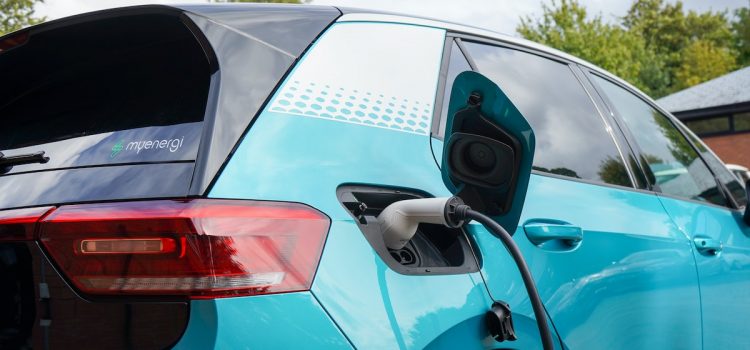

This article is an excerpt from the Shortform book guide to "False Alarm" by Bjørn Lomborg. Shortform has the world's best summaries and analyses of books you should be reading.
Like this article? Sign up for a free trial here.
Should we go vegetarian and drive electric cars? Should we stop having children and flying in airplanes?
Climate activists exhort us to make individual sacrifices—like eating less meat, flying less often, and turning off unused lights. Bjorn Lomborg argues that these exhortations are flawed: Individual actions on climate change do nearly nothing.
Keep reading to see how Lomborg makes this assessment.
Individual Action on Climate Change
To provide a metric for assessing individual action on climate change, Lomborg uses prices set by the Regional Greenhouse Gas Initiative (RGGI), the U.S.’s main carbon marketplace. RGGI limits power plants’ emissions by issuing limited emissions authorizations, costing $6 per ton of CO2.
(Shortform note: RGGI allowances are initially sold via auctions, where power plants bid on allowances, which are then distributed from high to low bids until they run out of allowances. Consequently, the price of RGGI allowances isn’t fixed. Rather, they can be as low as $2.38, or as high as $13 per allowance. Lomborg’s $6 figure is roughly the standard price of an allowance.)
In theory, individuals can cut one ton of carbon emissions by purchasing an RGGI allowance for $6, then not using the authorization—since each authorization that you purchase represents one ton of CO2 emissions that power plants can’t purchase or release into the atmosphere. In turn, Lomborg uses the price of RGGI allowances—$6 per ton of CO2—to evaluate three individual sacrifices: going vegetarian, using electric cars, and not having kids.
First, climate activists suggest that going vegetarian drastically decreases our carbon footprint. However, Lomborg cites studies suggesting that going vegetarian decreases our carbon emissions by only 4.3% per year, on average—about 1,200 pounds of CO2 annually. Since RGGI allows us to purchase one ton of carbon emissions for $6, this means going vegetarian is worth about $3.50 each year.
(Shortform note: Although switching to a vegetarian diet decreases our average carbon footprint, experts caution that some vegetarian foods are still responsible for high carbon emissions. For example, because asparagus is imported to the UK from Peru, Britons are responsible for 5 kilograms of CO2 per kilogram of asparagus—greater than the average carbon emissions from chicken or pork.)
Similarly, activists suggest that switching to electric cars will vastly cut emissions. Challenging this claim, Lomborg notes that electric cars often use electricity generated by fossil fuels, and producing them requires more energy than producing gas-powered cars. Weighing the emissions reduction against the energy demands, the International Energy Agency estimates that switching from gas-powered to electric cars cuts eight tons of emissions over the cars’ lifetime. Per RGGI, this is worth about $48.
(Shortform note: Because certain countries rely more on fossil fuels to generate electricity, the carbon emissions of electric vehicles vary by country. For example, one report finds that in countries that use coal to generate electricity, electric vehicles are no more carbon-friendly than hybrid vehicles. However, this means that as countries decarbonize their sources of electricity, the environmental benefits of electric vehicles will increase.)
Further, activists claim that choosing not to fly is crucial to mitigate climate change. Though this point has some merit, Lomborg notes that studies suggest temperature would be only 0.05°F lower by 2100 if we grounded all flights for the next 80 years. In other words, if nobody flew the rest of the century, we’d slow climate change by about one year. And, although Lomborg doesn’t assess this sacrifice via RGGI, his point is clear: Choosing not to fly isn’t effective in the fight against climate change.
(Shortform note: In 2018, the Swedish movement flygskam—flight shame—rose to popularity, with activists like Greta Thunberg imploring us to stop flying to mitigate climate change. This movement reflects recent trends, especially in Europe; one 2019 poll found that over 20% of Europeans surveyed had recently cut back on flying.)
Finally, some activists suggest we should stop having children since they generate enormous amounts of CO2 over their lifetimes. Lomborg admits that one person generates an average of 15 tons of CO2 per year, so children that live to 90 generate 1,350 tons over their lives. Per RGGI, this costs about $8,100. But, Lomborg argues that isn’t enough reason to stop having children, because it doesn’t consider the benefits of children alongside the cost. Since the benefits are immense, he claims they outweigh the $8,100 cost.
(Shortform note: In Under the Sky We Make, climate scientist Kimberly Nicholas agrees that we shouldn’t stop having children to mitigate climate change. However, her reasoning differs from Lomborg’s. Because children mostly generate carbon emissions in the distant future, and Nicholas thinks we only have until 2030 to avoid climate catastrophe, she concludes that not having children won’t actually help us avoid this catastrophe.)
In light of all these considerations, Lomborg concludes that emphasis on individual sacrifice is an ineffective approach to climate change.

———End of Preview———
Like what you just read? Read the rest of the world's best book summary and analysis of Bjørn Lomborg's "False Alarm" at Shortform.
Here's what you'll find in our full False Alarm summary:
- Why climate change isn't as cataclysmic as people think
- The unintended costs that come with climate activists’ proposed approaches
- A look at the most promising approaches to climate change






